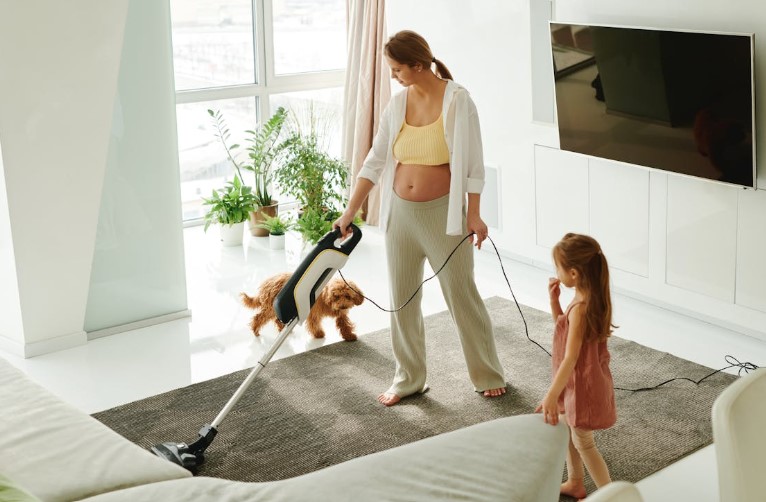Mold growth in carpets poses significant health risks and diminishes the aesthetic appeal of your home. Mold can trigger respiratory problems, allergic reactions, and various other health issues. Therefore, it is crucial to utilize proven methods for cleaning your carpets to prevent mold growth. This article outlines a range of effective ways to clean carpets and prevent mold through various techniques, ensuring a cleaner and healthier living environment.
Understanding Mold and Its Growth
Mold is a type of fungus that thrives in damp environments and can easily infest carpets, particularly in areas of high humidity or following significant water damage. Factors such as inadequate ventilation, water damage, condensation, or spills can create ideal conditions for mold growth. Understanding how mold proliferates can help in taking the necessary steps to prevent its occurrence in your home.
The Importance of Carpet Cleaning for Mold Prevention
Effective and regular carpet cleaning is essential for safeguarding your living environment and promoting a healthier lifestyle. Dirty carpets not only harbor allergens and dust but can also become a breeding ground for mold. Here are several safe and effective steps to follow for maintaining your carpets and preventing mold growth.
Regular Vacuuming
Routine vacuuming is a fundamental aspect of maintaining your carpet’s cleanliness. It helps eliminate dirt and mold spores that could eventually contribute to mold growth. For optimal results, use a vacuum cleaner equipped with a High-Efficiency Particulate Air (HEPA) filter. HEPA filters can capture minute particles and spores, preventing them from recirculating into the air. Experts recommend vacuuming your carpets at least once a week, with more frequent sessions in high-traffic areas.
Professional Hot Water Extraction
Hot water extraction, commonly referred to as steam cleaning, is best performed by professionals. This method involves washing the carpet with a mixture of hot water and detergent under high pressure. It effectively removes deep-rooted dirt and mold spores that regular vacuuming may not reach. Although hiring a professional service can be an investment, the benefits regarding mold prevention and overall carpet cleanliness are substantial. Regular hot water extraction can significantly enhance the longevity of your carpets while safeguarding your indoor air quality.
Using Anti-Mold Carpet Cleaning Products
When cleaning your carpets, consider using products specifically designed with anti-mold properties. These cleaning solutions contain specialized ingredients that target and kill mold spores while preventing their regrowth. Ensure to follow the product instructions meticulously and perform a patch test on a small, inconspicuous area of your carpet to avoid potential discoloration or damage. By incorporating anti-mold products into your cleaning routine, you can further enhance the effectiveness of your carpet cleaning efforts.
Regular Carpet Inspection
Routine inspections are vital for detecting early signs of mold growth. Look for discolored patches, spots, or any musty odors emanating from the carpet. Early detection allows for timely intervention, preventing the mold from embedding deeper into the carpet fibers. Incorporating regular inspections into your cleaning routine can significantly reduce the risk of extensive mold issues, saving you both time and money in the long run.
Drying Carpets Thoroughly After Cleaning
Mold thrives in moist environments, making thorough drying of your carpets essential after cleaning. If you employ wet cleaning methods, ensure that your carpets are completely dry afterward. Utilize fans, dehumidifiers, or air conditioning to expedite the drying process. Avoid walking on the carpet until it is entirely dry, as this can lead to trapped moisture and facilitate mold growth. By ensuring your carpets are dry, you minimize the risk of mold developing post-cleaning.
Correcting Humidity Levels
Maintaining optimal indoor humidity levels is crucial for mold growth prevention. The optimal humidity levels should be maintained between 30% and 50%. Excessive humidity can significantly increase the likelihood of mold formation. Consider using dehumidifiers to control moisture levels in your home, especially in areas prone to dampness, such as basements or bathrooms. Regularly monitoring humidity levels with a hygrometer can help you maintain a comfortable and mold-free environment.
Additional Mold Prevention Tips
Alongside these cleaning methods, it is essential to address any water issues promptly. Swift water evacuation after flooding or leaks can drastically reduce the chances of mold growth. If your carpets experience significant water exposure, it is advisable to contact a professional carpet cleaning service to ensure thorough drying and cleaning. Additionally, consider investing in moisture barriers or protective coatings for your carpets to further prevent mold infiltration.
Seeking Professional Help
While many of these methods can be performed as part of your regular cleaning routine, seeking professional help can provide a more thorough cleaning experience. Carpet cleaning specialists can offer tailored advice based on your carpet type and specific situation, ensuring that hidden dirt and mold spores are effectively eliminated. Professional services often utilize advanced cleaning technologies and techniques that may not be available for home use, enhancing your mold prevention efforts.










